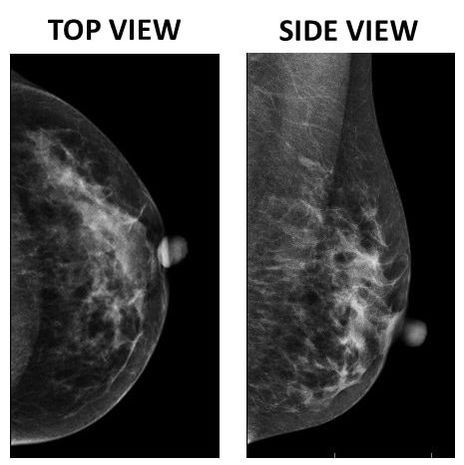Making an appointment When you call up to make your appointment you will be asked details about the referral form given to you by your doctor. It is helpful if you inform the receptionist if there is anything that you feel may require a longer booking such as breast implants or a disability that may need the help of a second technician. You will be asked to wear a two piece outfit to allow you to undress from the waist up and not to apply any deodorants or creams prior to the appointment as they may affect the image. The appointment A female technician trained specifically in mammography will call you from the waiting room and take you to either a cubicle or the mammography room. Here they will confirm your identity and provide you with a gown. They will ask you to remove everything from the waist up. Jewellery is fine to stay on however long necklaces are best to either remove or swing round to the back. If you have long hair it is helpful if you are able to tie it back. The standard mammogram Once ready you will then be asked to remove the gown and step in front of the mammogram machine. If you don’t feel comfortable removing the whole gown you can remove one arm at a time. Two images will be taken of each breast, one breast at a time. Both breasts are always imaged regardless of the symptom you are experiencing. They will take an image from the top of the breast looking down towards your feet and one from the side. To be able to get you into the best position the technician will need to be quite hands on. This means touching your upper body several times. She will need to touch and move your breasts quite firmly to ensure that the entire breast is in the picture. When imaging the breast for the top picture I will ask my patient to stand in front of the machine with their arms down by their side. The first breast is lifted and the machine adjusted to the correct height and the breast placed onto the x-ray unit. Your breast will be held firmly in place as a plastic paddle is lowered onto the breast and used to hold and compress the breast tissue. Bad posture is encouraged in the mammography room, slouching forward sightly and sticking your bottom out will help relax the chest muscles and allow the most amount of breast tissue to be included in the image. We appreciate that it is a difficult situation to relax in but your technician will help and encourage you to do this. The more relaxed you are the softer your muscles are and the more breast tissue can be included in the picture. Relaxing your body will also reduce the discomfort that some women experience when compression is applied. After the compression is applied the image is taken and this generally takes no more than about 30 seconds. The side images are of the whole breast right up into the arm pit. You will be asked to place your arm across the machine and to lean in so that the unit is poking firmly into your arm pit. The breast will be held firmly up and out across the unit and again the compression paddle will be placed firmly down on the breast. For these the paddle is quite tight against your collar bone and ribs to ensure that no breast tissue is missed. Occasionally your technician will decide that they need to take more images to ensure that the entire breast is covered but they will talk you through this process. Once she is happy that the whole breast has been imaged, you will be asked to put the gown back on and to wait until the images have been looked at by a radiologist. Why compression? Compression is probably the most talked, joked and feared component of a mammogram. But it is an essential part of the mammogram.
An easy way to imagine what compression does it to imagine a bag of marbles. Each of those marbles represents each of the little parts of your breast that are responsible for making milk. If I placed that bag on a bench and took a photo of it, all I would see is the marbles sitting on the top. But if I placed a clear weight on top of the bag which spread those marbles out, then I could take a picture of all the marbles. This is what compression does. It allows us to image all the parts of the breast without too much overlap. The result is a clear, crisp image with no blurring that the doctor can use to identify any areas of concern. For the majority of people compression is uncomfortable at most. I always tell my clients if they experience any pinching or pain to let me know and I can make adjustments. Communication between you and the technician is the key to working together to get the best images possible. We all understand that compression isn’t pleasant but we always work to ensure that it is over quickly.
1 Comment
|
Archives
Why does the United States have Dense Breast "Inform" Laws? What I learned and why it matters
BreastScreen Australia conference debate "Breast density - Should we tell the women?" InforMD - a new initiative to raise awareness about breast density Breast density in screening, detection and incidence of breast cancer The global breast density conversation: Meet one woman driving change in the United Kingdom What to expect at a mammogram appointment Categories
All
|



 RSS Feed
RSS Feed
